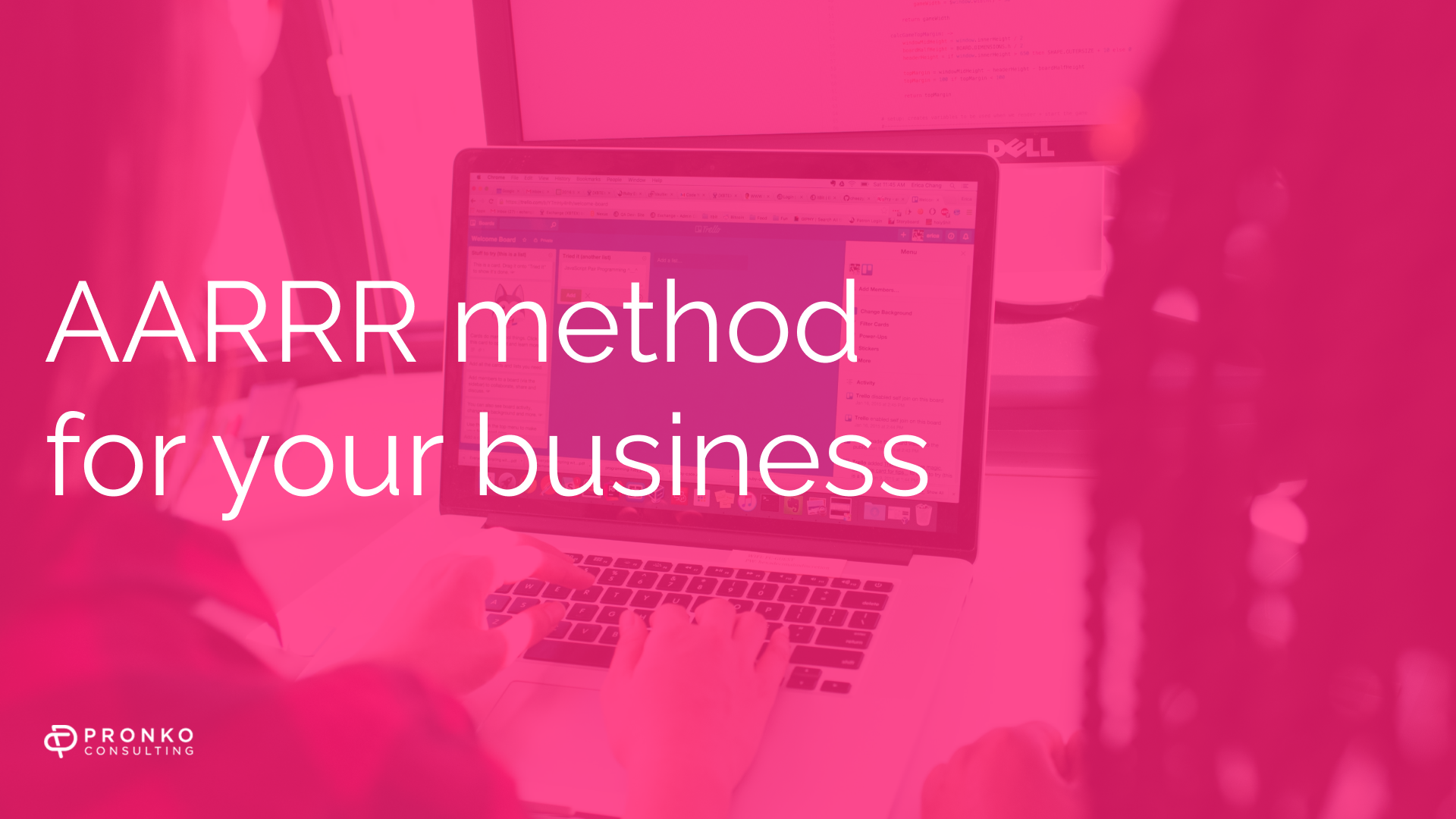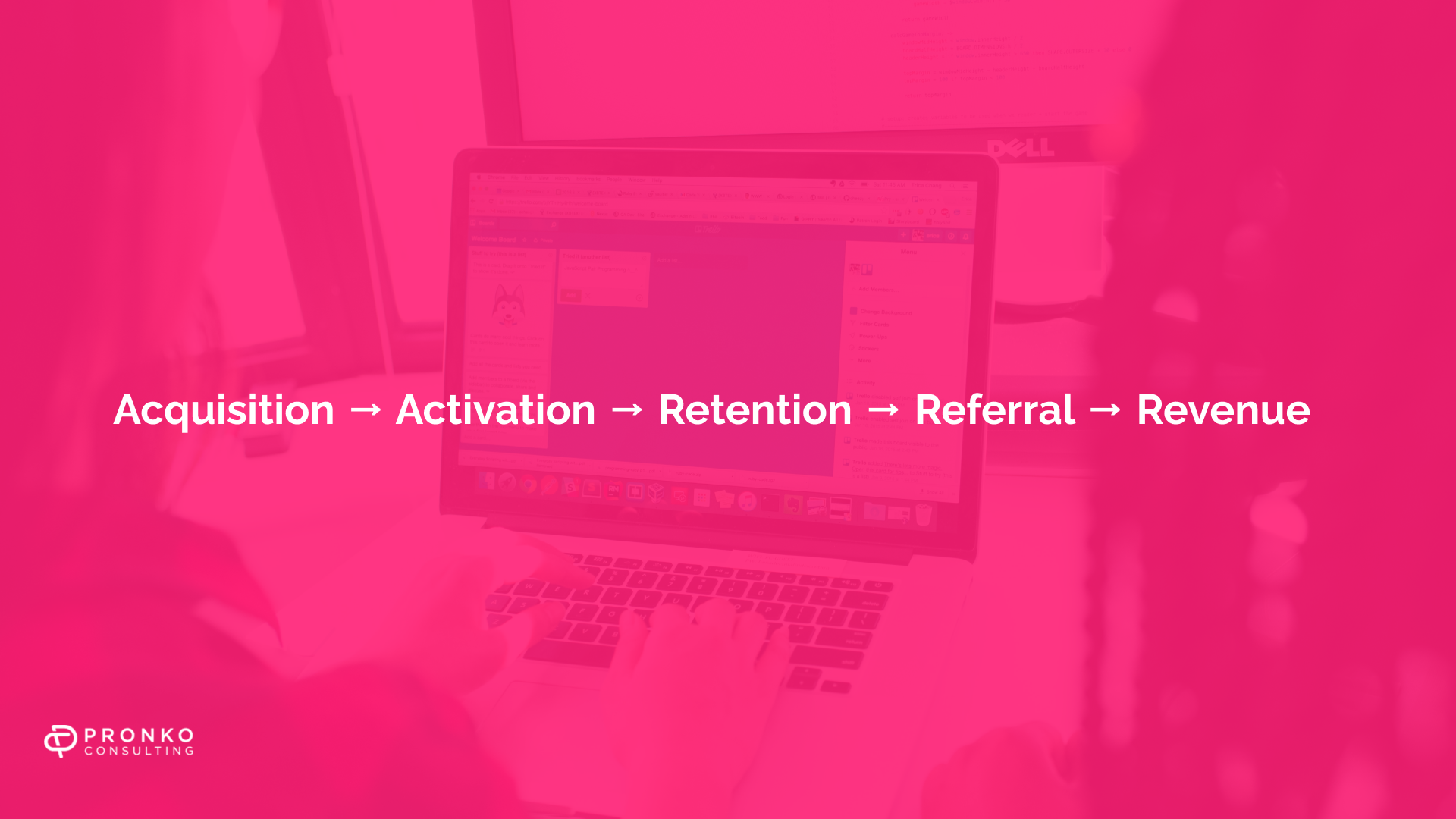AARRR method: how to understand whether a project will take off or fail

Launching your long-suffering product and realizing that nobody needs it in FIG is excruciating. Metrics help to understand how successfully the project attracts customers and how it develops. But where to look and what to do with them? There is a great thing about having time to adjust directions, products, and tools: a method that helps determine the success of a project using a conversion funnel.
The AARRR model; was invented by venture investor and founder of the 500 Startups startup incubator Dave McClure in 2007.
It helps startups and Internet companies set up a sales funnel and monitor how business deals progress. The metric is also called "pirate": if you say the name out loud, you get "AARRR" - the battle cry of pirates.
According to McClure, five stages help to understand and manage the company's processes: Acquisition → Activation → Retention → Referral → Revenue. It is a complete structure of the client's life and gives you an idea of how well you attract new users.
We've translated a slide from McClure's presentation where he showed how to get into the AARRR funnel. At first glance, she is intimidating. But if you look closely, this is a ready-made sales funnel for a new company or product.

We are promoting an application that helps you keep track of your health. What do we need from the user? So he:
- Download the app and register.
- Sign up for personalized health tips based on phone data.
- Returned to the application and bought additional advice based on medical tests from partner companies.
AARRR are metrics to track, packaged in five directions. Create a spreadsheet where you evaluate critical campaign data to compare and analyze performance quickly. So you will have all the information.
Attraction
Analyze where users come from and what they are. After all, the result of all the following stages of the funnel will depend on the quality of contacts. You can attract a million visitors, but the conversion to communications will be 0.000001%, and their income will be two rubles and three kopecks. It is better to find 100 clients, each of which will bring the company 1000 rubles. There is a sense in the number of visitors if you are an online publication that only needs to sell something to readers.
What channels to use:
- advertising in social media communities,
- advertising with bloggers,
- targeted advertising
- contextual advertising,
- mailing list,
- SEO promotion,
- advertising in online publications,
- Articles on the company's blog.
What to do:
- test creatives
- use multiple channels,
- customize ads for different audiences,
- search and analyze the best campaigns.
Activation
More than bringing the user to the site is required. Our goal is to do everything possible so that he enjoys the first visit and rejoices in a new acquaintance. At this stage, you need to understand at what point the user leaves, how much time he spends on the site, and what pages he visits. You can already evaluate the quality of the traffic you receive. And think why someone left.
What to do:
- offer a free version or test drive,
- set up retargeting for those who left the site without leaving a request,
- Conduct A/B testing and improve website design.
What metrics to watch:
- the number of app downloads,
- the number of applications left,
- the number of newsletter subscriptions,
- cost per lead
- the number of items added to the cart.
Retention
If we want to avoid gaining a bunch of contacts that are of no use, then we need to keep users and periodically remind ourselves. This stage aims to prove the product's value and encourage people to spend more time with you. It is essential to make the content as personalized as possible: send push notifications like "Hello, you haven't opened the app for a long time, we miss you" or make an email newsletter with learning results for an educational project and for an accounting service with a reminder to pay taxes and bills.
What to do:
- Remind yourself via email newsletter or push notifications.
- Start a company blog inside the site or application.
- Make a helpful newsletter.
What metrics to watch:
- the number of subscriptions,
- the percentage of notifications opened,
- the number of people who use the application,
- frequency of using the application.
Recommendations
People like you so much that they are ready to tell their friends about you. At this stage, asking users for their opinion about your product and what can be improved will be proper. We motivate them to tell friends, colleagues, and acquaintances about you; we form brand advocates.
What to do:
- add a "Share on social networks" button to the site,
- develop an affiliate program,
- make referral links.
What metrics to look at:
- virality
Income
If the user does not buy anything, this is the wrong user. Are you spending money on it but getting nothing out of it? Logically, this is a so-so business model. It's time to count the money.
What can be sold:
- product/service,
- subscription,
- additional services: courier delivery, premium service, and so on.
What to watch and count:
- the number of purchases,
- customer acquisition cost
- average check.
Team roles
One person does not make AARRR; each business line must contribute to the development of this model. McClure has already distributed tasks for everyone.
1 Marketer
The main question is: which channel to use, which markets to enter?
Tasks:
- creates and tests several marketing campaigns,
- chooses channels with the best profit, conversion, and low cost and focuses on them,
- measures the funnel over the entire depth, and not just at the site,
- segments and sorts channels and users depending on the conversion at the deepest level.
2 Product Manager
The main question is: what can be improved in the product?
Tasks:
- looking for opportunities to improve conversions: 80% by optimizing existing features, 20% by developing new ones,
- does a lot of A/B tests, a lot,
- repeats the first two paragraphs over and over.
3 CEO/Founder
The main question is: what metrics and KPIs to look at?
Tasks:
- creates and improves hypotheses about the life cycle of the client and refuses non-working ones,
- focuses on 5-10 stages of the cycle that can be improved (fewer, but no more),
- constantly measures and tests hypotheses,
delegates control over metrics.
